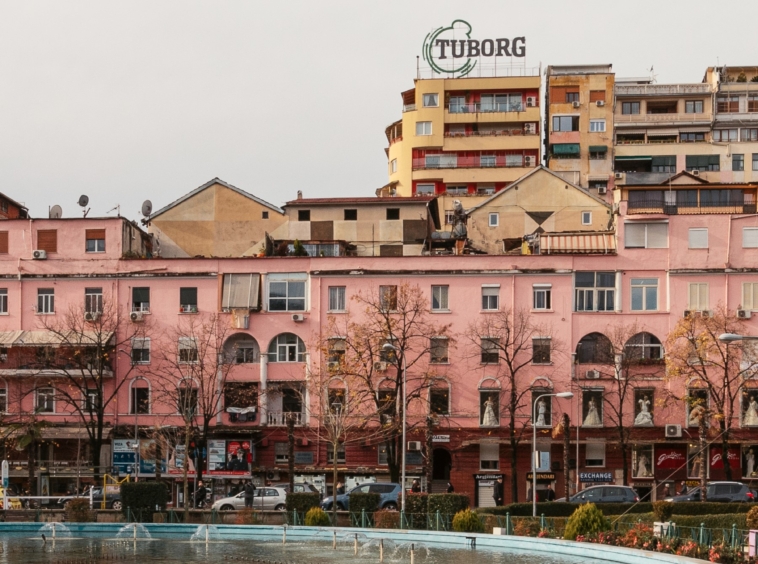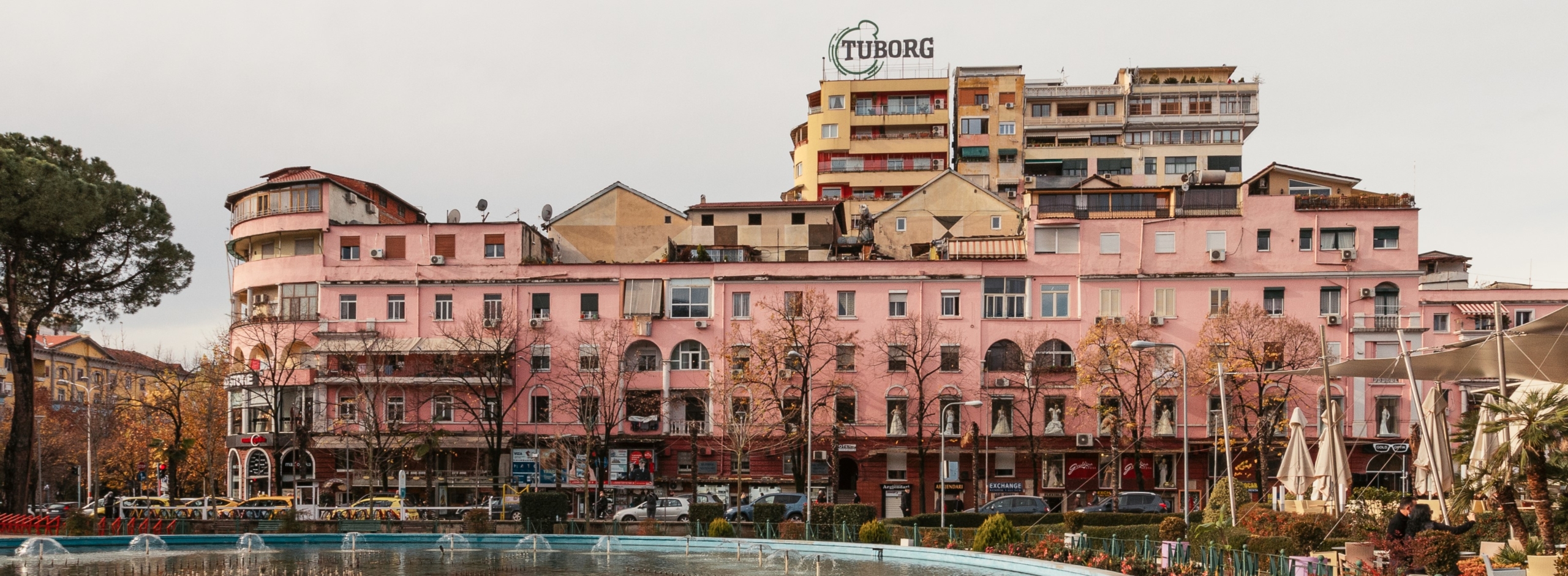“Shallvare” Residences Complex
Details
Updated on December 30, 2024 at 12:22 pmInformation
- Author: Gani Strazimiri, Sokrat Mosko, Skender Kristo Luarasi
- Year Built: 1951-1953
Description
The Shallvare Residences Complex, constructed between 1951 and 1953, represents an important chapter in Tirana’s urban and architectural history. Built in the Shallvare field, this residential complex was part of a broader effort to address the growing housing needs of Albania’s capital city during the mid-20th century.
Historical Context
The Shallvare complex was developed under the framework of a regulatory plan designed to accommodate Tirana’s rapidly expanding population. Located near Rinia Park, the complex was strategically positioned with an eastern view toward Dajti Mountain, enhancing its appeal and integrating it into the city’s natural and urban landscape. The park, planted with trees by students from the Institute for Agriculture, added to the area’s sense of vitality and community.
Architectural Features
Designed by architect Gani Strazimiri, the complex embodies the Soviet totalitarian architectural style, reflecting the influence of Albania’s political alignment with the Eastern Bloc during this period.
- Massive Brick Construction:
The buildings were constructed using solid brick masonry, a hallmark of Soviet architecture, known for its durability and functionality. - Narrow Windows and Balconies:
The design features small spaces for windows and balconies, emphasizing efficiency over openness and reflecting the utilitarian approach of the era. - Decorative Elements:
Despite its functionalist core, the architecture incorporates framed decorative details, including capitals and pilasters, which add a neoclassical touch and a sense of formality to the design. - Roofing:
Originally built with wooden roofs, these have since been replaced with terraces, reflecting changes in usage and urban trends over time.
Urban Integration
The layout and volumes of the Shallvare complex were carefully designed to align with the urban scale of Tirana in the 1950s. The complex contributed to shaping the city’s identity during a period of rapid modernization and political transformation.
Evolution and Changes
Over the decades, the Shallvare complex has undergone numerous spontaneous changes, including alterations to its facades, interiors, and communal spaces. These modifications reflect the evolving needs and preferences of its residents while highlighting the challenges of preserving mid-20th-century urban heritage.
Cultural and Historical Significance
The Shallvare Residences serve as a living testament to Tirana’s history as Albania’s capital during the socialist period. They embody the architectural and urban planning ideologies of the time, offering insights into how Soviet influences shaped the city’s development.
Legacy
Today, the Shallvare Residences Complex is both a functional housing area and a symbol of Tirana’s mid-20th-century evolution. Its presence in the urban landscape continues to narrate the city’s history, balancing the legacy of its original design with the adaptations of modern life.
Address
Open on Google Maps- City Tirana








